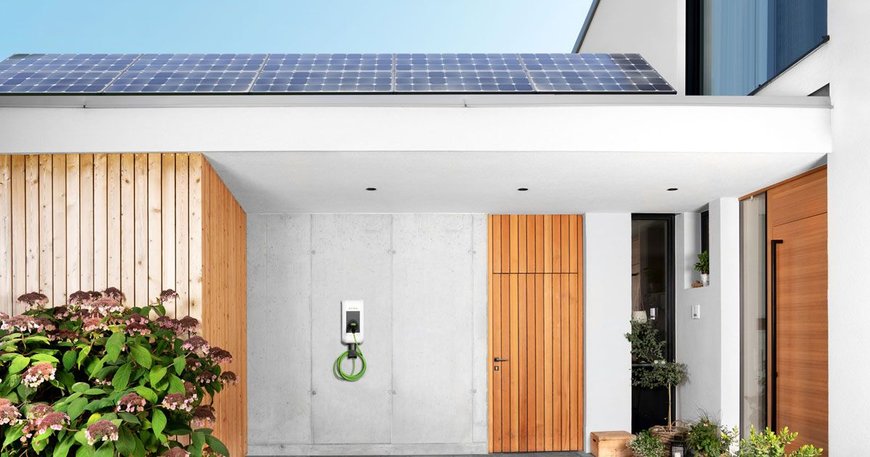www.auto-innovations.net
24
'22
Written on Modified on
KEBA News
Excess PV Charging – What does that mean?
Making your e-car move with your own solar energy.

Installing photovoltaic (PV) solar panels on your roof allows you to generate not only power for your home or the grid. Solar electric energy can also go directly to your electric vehicle. We explain what excess PV charging is exactly and how it works.
What is excess PV charging?
Excess PV charging means that the self-produced solar power which is not consumed in the building flows directly into the battery of the electric vehicle. This allows you to use as much of your own green energy as possible for driving without having to install a power storage unit as an energy store. In charging “from the roof to the battery,” we distinguish between three models.
Excess PV charging without control
This is the simplest solution in terms of technology. However, getting good results with this method – i.e. to move your electric car with a lot of your own PV electricity – requires a certain amount of experience and cooperation from the user. Since there is no communication between the wallbox and the solar panel, the EV always charges as soon as it is plugged in – regardless of whether the sun is shining or not and a lot of electricity is produced or not.
If the car requires more electricity than is made available by the solar panels, the electric grid provides the rest. Here’s an example: If the charging power is set to 11 kW and there’s only 3 kW coming in “from the roof,” the building’s power supply provides 8 kW. To get as much solar energy as possible in your tank with this method, it is preferable to plug in the car when the sun is shining and to reduce the charging power – ideally to a level the solar panels can produce in excess. Because if your personal solar power plant supplies only about 5 kW of excess energy – depending on its size, the building’s energy consumption, and the time of year – a higher desired charging power automatically means consuming more expensive grid power. The advantage of this method: It’s cheap. The disadvantage: It is laborious and can lead to very long charging times if you only want to charge with solar power.
Excess PV charging via enable signal or pure excess charging
With a predefined excess of solar energy, the inverter or smart meter sends an enable signal to the wallbox, and the charging process begins. If the threshold is 4 kW, for instance, only your own solar power flows into the battery from this available amount onward. The advantage of this system: The wallbox doesn’t mix grid and solar energy. That’s why it’s also called pure excess charging. Thus the consumption ratio of self-produced energy is still higher compared to mode 1.
In order for this kind of excess PV charging to work, the wallbox must have an enable input contact (like all KEBA wallboxes of the c- und x-series). To not be completely dependent on the sun, an external switch can be flipped to charge via the regular grid—for instance at night.
Smart excess PV charging via dynamic control
In this case, all of the excess PV power generated in each moment is made available to the vehicle at the charging station. This is made possible by the constant communication between the smart meter and the wallbox continually adapting the electric car’s charging power to the excess PV power. With this method, the self-consumed power can thus be maximized. Only when all the consumers in the building, including the electric car(s), are charged, is solar power fed to the grid. Even if this method has the highest one-time investment costs (as it requires an energy management system) compared to modes 1 and 2, the consumption of expensive grid power can be permanently and drastically lowered. This is ecologically feasible, makes you independent, and saves money in the long run.
PV charging with buffer storage
To make even better use of the electricity from your own solar panels, it can be stored for night time or bad-weather days in a battery for the building. If the batteries are large enough, they can also be used to charge your electric vehicle. These batteries are quite expensive, however, and they do not operate lossless. At 90 percent, their efficiency is high, but it is still better overall to charge the car from the roof, without any detours.
www.keba.com

